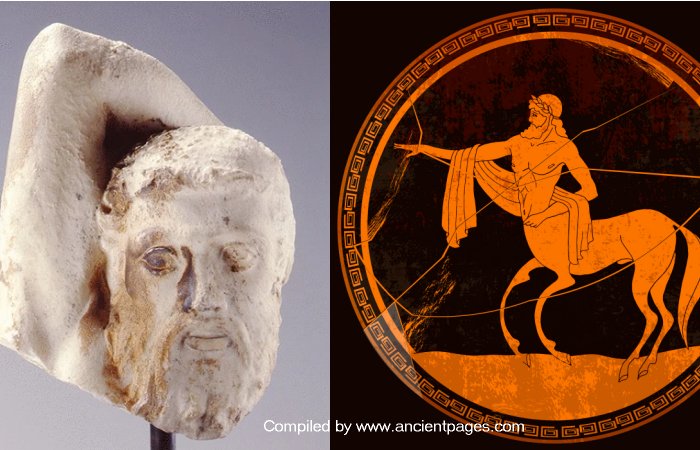Conny Waters - AncientPages.com - The centaur head was given to the Danish King Christian V as a gift in 1688. The Danish Captain who served in the Venetian fleet and was present during the bombardment of the Acropolis in Athens in 1687 brought the head along with another one from the Parthenon temple to his country.
At first glance, some can perhaps not see there is something unusual with the head that originally belonged to a centaur figure and was part of a scene depicting the Greek mythological Lapiths' battle against the centaurs. In Greek mythology, the centaur is a half-horse and half-human creature.
In Greek myths, a centaur is part horse and part man. Credit: Adobe Stock - Matrioshka
If one takes a closer look at the object, it becomes obvious the centaur's head is coated with a thin brown film. The same brownish substance has been found on several other marble fragments from the Parthenon. The British Museum first examined the mysterious brown film in 1830.
Attempts were made to determine if the color originated from ancient paint. Still, it was eventually concluded that it might result from a chemical reaction between the marble and the air or that the marble contained iron particles that had migrated to the surface, coloring it brown.
"There have been many attempts to explain the peculiar brown film. In 1851, German chemist, Justus von Liebig, performed the first actual scientific investigation and determined that the brown film contained oxalates—salts of oxalic acid. This has been confirmed by later analyses, but the origin of the oxalates has remained a mystery," says Professor emeritus Kaare Lund Rasmussen, an expert in chemical analyses of historical and archaeological artifacts, Department of Physics, Chemistry and Pharmacy, University of Southern Denmark.
What Is The Brown Film On The Centaur's Marble Head?
One theory is that brown film can be traced to some biological organisms such as lichen, bacteria, algae, or fungi. The problem with no specific organism had been identified. The brown film could also be remnants of applied paint that was perhaps applied to protect or tone the marble surface,
A team of international scientists has conducted an analysis and published the results of their study on the brown-colored centaur head from the National Museum in the journal Heritage Science.
For their investigations, the research team was allowed to take five small samples from the back of the centaur head. These samples underwent various analyses in SDU's laboratories, including protein analysis and so-called Laser Ablation Inductively Coupled Plasma Mass Spectrometry.
"We found no traces of biological matter in the brown layers—only from our own fingerprints and perhaps a bird egg that broke on the marble in ancient times. This doesn't prove that there never was a biological substance, but it significantly reduces the probability, making the theory of a biological organism less probable now," says Kaare Lund Rasmussen.
The Centaur head at the National Museum in Copenhagen. a: front view; b: rear view. The brown stains are clearly visible. Courtesy of The National Museum of Denmark
The science team does not think it is likely that the marble surface was painted or preserved. Ancient paints were typically based on natural products such as eggs, milk, and bones, and no traces of such ingredients were found in the brown stain alone.
The Mystery Continues
While studying the centaur head, the team discovered that the brown film consists of two separate layers. These two layers are approximately equally thick, around 50 micrometers each, and they differ in terms of trace element composition. However, both layers contain a mixture of the oxalate minerals weddellite and whewellite.
Arrows show the sampling sites on the rear of the Centaur head. Credit: Heritage Science
The fact that there are two distinct layers argues against the theory that they were created by the migration of material, such as iron particles, from the interior of the marble. It also contradicts the theory that they resulted from a reaction with the air.
The theory air pollution is to blame is also far-fetched, considering the fact the centaur head has been indoors in Copenhagen since before modern industrialization began in the 18th century.
See also: More Archaeology News
"As there are two different brown layers with different chemical compositions, it is likely that they have different origins. This could suggest that someone applied paint or a conservation treatment, but since we haven't found traces of such substances, the brown color remains a mystery," concludes Kaare Lund Rasmussen.
This intriguing centaur marble head is kept at the National Museum in Copenhagen, Denmark.
The study was published in the journal Heritage Science
Written by Conny Waters - AncientPages.com Staff Writer
